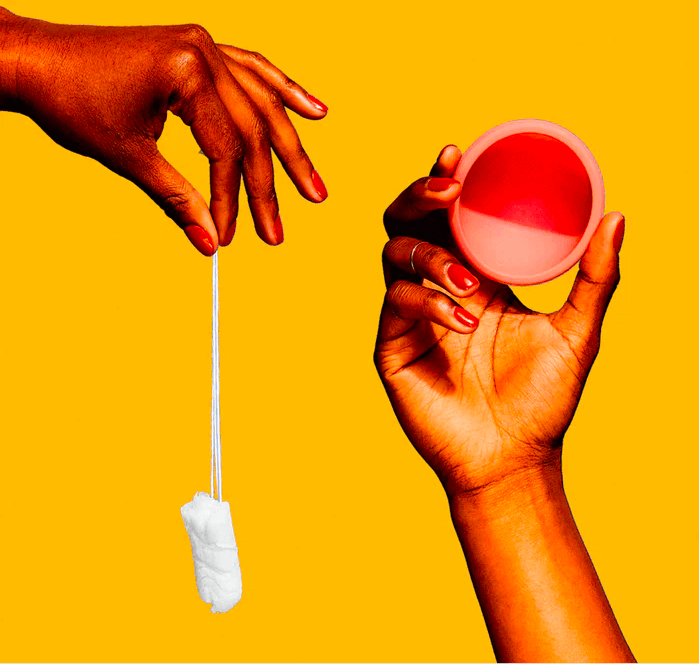Having to deal with vaginal thrush isn’t a walk in the park. But second-guessing your vaginal thrush symptoms can easily lead to confusion.
Yet, you’re not alone. Vaginal thrush is the second most common vaginal infection.
Did you know up to 75% of people with a vagina will experience at least one vaginal yeast infection in their lifetime? And if you’re among the less fortunate half of that 75%, you’ll likely face multiple thrush infections. Two, three, or more, depending on your luck.
That sounds, well… uncomfortable. And treatment can be sheer drudgery.
You may have been prescribed pessaries and intravaginal creams for your past vaginal yeast infections - but sometimes conventional treatment won’t cut it. With recurrent thrush episodes, you may benefit from combination therapy.
Long story short, today we dive into what vaginal thrush is, reviewing the common symptoms and natural remedies.
What Exactly Is Vaginal Thrush?
Vaginal thrush (aka vaginal yeast infection or vaginal candidiasis) is a common infection of the vagina or vulva. The main offender here is a yeast germ—candida albicans—that causes a fungal infection.
This yeast-like fungus naturally inhabits your vaginal area in small numbers. But like with many other good germs in the human body, candida albicans won’t cause any harm unless it grows too much. When it multiplies, it goes haywire and starts causing uncomfortable symptoms.
Common Vaginal Thrush Symptoms
So, you suspect you have vaginal thrush symptoms but feel pieces of the puzzle are missing. It’s good that you’re researching—not having a complete picture may make you draw false conclusions. Our list of the most common symptoms will help.
But remember: not all fungal infection symptoms are the same—some are more common than others, some require more immediate action, and some call for a doctor’s visit.
That’s why we’ve parsed them into common, frequent, and red-flag symptoms in the table below.
Most vaginal yeast infections are nothing to worry about. But please do book a doctor’s appointment if you start experiencing any of the red flag symptoms. Doctors may examine you and take a vaginal swab to decide on the correct treatment.
Speaking of treatment, there are options relative to the severity of your condition and the next section helps you review them.
Conventional vs. Alternative Treatment
Your thrush treatment may depend on the severity of your infection. Vaginal yeast infections are pretty easy to treat with symptoms clearing up within a week or two. Some people, though, will have a harder time, and the infection will keep coming back.
If this is you, your doctor will prescribe the conventional treatment:
- Pessaries
- Intravaginal creams
- Orally administered capsules
- Combination packs (two-in-one tablet and cream products)
Yet, there are alternatives to prescription meds that you can use for a vaginal yeast infection. Think of over-the-counter medication that you can use to treat mild thrush symptoms. There are also popular natural remedies.
Why use a natural remedy? There are a few different reasons. For example, conventional vaginal thrush meds like fluconazole may be ill-advised if you’re pregnant.
Likewise, some conventional products can damage latex condoms and diaphragms, compromising their effectiveness.
Otherwise, some people may just want to circumvent prescription medication for their own reasons. Are you one of those people? Below is our roundup of natural remedies for yeast infections.
1. Probiotic Vaginal Suppositories
If you have vaginal fungus coming after you, this can be for two reasons. Either your immune system is bailing on you, or the natural balance in your vagina is being disrupted.
This happens when good bacteria in your vagina cannot keep the yeast levels at bay. The result is overgrowth of yeast and the accompanying symptoms like swelling and inflammation.
Probiotics are a way to bring good bacteria back into the game. And yes, evidence of their effectiveness in treating vaginal infections is scarce. Yet, some research studies are beginning to shed light on their potential benefits.
A recent study shows that a combination of conventional antifungal medication and probiotics can improve treatment outcomes in people with recurrent yeast infections. Namely, the combination therapy resulted in an 89% cure rate in people who’d had 12 months of treatment.
2. Carefully Planned Menstrual Care
So, which menstrual products should you use so they help rather than worsen your vaginal yeast infection? There's no cut-and-dry solution to this problem, but we’ll try to extrapolate.
While tampons are unlikely to trigger vaginal yeast infections, they can promote them in two ways.
- They can contribute to the moist environment in your vaginal canal (if left in your vagina for too long), which may encourage the yeast to grow.
- They can stick to your vaginal walls during your light flow days, causing tiny abrasions and potential yeast flare-ups.
By the same token, pads will trap extra moisture around your vulva and labia, making yeast strains more likely to thrive.
Conversely, menstrual cups and discs free up your vaginal canal space allowing the air to circulate and your skin to breathe. This can help keep your vaginal yeast counts at bay.
Also, the materials used in menstrual discs support your vaginal health. nixit is no exception—being made up of a 100% non-porous medical grade silicone that resists bacteria growth (absorbent tampons can be a breeding ground for bacteria!). There’s no nasties or unnecessary chemicals present either.
We strongly recommend washing your hands before handling menstrual cups, as this can lower your risk of developing any type of infection, including thrush. Also, make sure to sanitize your cup before and after use by placing them in boiling water for five minutes.
3. Garlic
Garlic is a strong antimicrobial. Importantly, there have been a few medical studies examining its effectiveness in vaginal candidiasis.
One of these studies tested garlic's active compound against 18 Candida strains. The results found that garlic can have a certain impact on curbing fungus growth.
On the other hand, the results of Australian research exploring the effects of short-term oral garlic doses for thrush treatment were inconclusive.
A 2018 Iranian study, however, found garlic can effectively curb the growth of Candida in people with oral thrush.
An important note: inserting garlic cloves into your vagina is ill-advised. Instead, add garlic to your diet, which may help prevent future yeast infections.
4. Tea Tree Oil
Finally, you can use tea tree oil to treat infections caused by the fungus candida albicans. This essential oil can help the 10% of the population to whom recurrent yeast infections have been giving a tough time.
Short and sweet, yeast infections can become resistant to conventional antifungal treatments. Not tea tree oil, though.
Moreover, according to the Centers for Disease Control and Prevention, roughly 7% of all Candida blood samples tested at the CDC showed resistance to the antifungal drug fluconazole.
Even more concerning, antimicrobial resistance is becoming precariously common with Candida.
That said, a 2016 clinical study explored the effectiveness of the combined probiotics and tea tree oil therapy. Researchers were aiming to find a way around antimicrobial resistance. What they found was that the combination treatment helped lower the yeast colonization.
The treatment also stimulated the physiological defensive response in people taking the suppositories. Importantly, no resistance has been documented regarding tea tree oil.
This makes it a potentially effective means of relief for people with recurrent thrush infections.
Pro tip: Always choose prepared tea tree vaginal suppositories over essential oils as they’re not recommended for internal use.
Is Vaginal Thrush Contagious?
Vaginal thrush is not contagious, and, strictly speaking, it’s not a sexually transmitted infection. It’s unlikely you’ll get the infection if your sexual partner is affected, but it can happen. What’s more, sex can make your symptoms worse.
You can develop minor sores due to friction that occurs during sexual intercourse. These sores can make candida albicans more likely to thrive and more challenging to eliminate.
That said, it’s best to abstain from sex during your thrush treatment. Alternatively, use a water-based lubricant when engaging in sexual activity. The nixit water-based personal lubricant is a great choice. It matches the pH of your vagina, so you can say goodbye to pH disruptions, burning, and irritation. It’s also completely natural, fragrance-free, and made from plant based materials! Perfect!
Keep Your Vaginal Yeast Infection At Bay
So there you go, you’ve got yourself some questions answered—what vaginal thrush is, the common symptoms, and natural remedies that can help if you develop an infection.
Remember to touch base with your doctor if your symptoms persist following your thrush treatment. This may mean that you’ve self-diagnosed wrongly. Your symptoms can be due to something other than a simple vaginal yeast infection, and this may require further testing.
Here at nixit, we design menstrual discs with your vaginal health in mind, but we’re also champions of removing the stigma around vaginal health issues. Health-wise, knowledge will always benefit you. So, check out our blog, sign up for the nixit newsletter, and stay informed.




